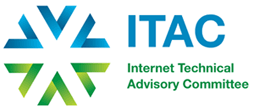Contact: Constance Bommelaer, [email protected] and Heather Boyles, [email protected]
This work, resulting from the Ministers’ decision in 2007 to develop an Innovation Strategy to strengthen innovation performance and its contribution to growth, is proving to be extremely relevant in the current economic crisis and we applaud the quality of the first draft provided by the SG. However, we feel greater emphasis could be made of the changing nature of innovation today. It is proposed to deepen the analysis that is proposed in two directions:
i) Including a description of the Internet’s ecosystem, its main actors and their contribution to innovation and to economic growth. This will provide the basis needed for the second suggested addition, outlined below. The description should include the following elements:
We cannot talk about innovation without talking about the Internet’s model because the Internet model is in itself an engine to innovation. It is vital to understand what makes the Internet a driver and enabler of global innovation. The success and the value of the Internet unequivocally lies in its unique development and management model (robust, flexible and adaptive):
a) The Internet is a network of tens of thousands of networks, drawing overall resilience from distributed responsibility. It works because of the collaborative engagement of many organisations (researchers, business people, civil society, academics and governmental officials).
b) Its development is based on open standards, which are openly developed and distributed broadly and freely.
c) Its model is widely supported by key architectural principles, such as the “end-to-end principle”. These encourage the creation and global deployment of innovative, successful and often surprising applications. Those who create applications don’t need permission to deploy them on the Internet. More importantly, users themselves choose which applications suit their needs.
ii) Understanding and maximizing the benefit of the new distributed model of Internet-based innovation. ICT and the Internet are transforming the way the innovation is done. The centrally planed approach is giving way to the more democratic new model of innovation, and the move toward open innovation is starting to transform entire industries.
“Innovation used to be largely the purview of “white coat” (researchers at universities and industry labs). (…) But now, thanks to the Internet and SOA, Web 2.0 tools, open source business models etc a much larger community can extract this knowledge from academic research and be full participants, if not leaders, in the innovation process. This will be a significant advantage for entrepreneurs and small business and will have significant transformative process on our economy” (The Economist, Special report on innovation, October 2007).
The Internet is the ultimate source of information sharing. We are now seeing virtual R&D teams that sometimes involve hundreds of people distributed around the world, all kept in touch by the Internet. The key to this innovation is keeping the Internet platform open.
The foremost challenge is that established players need to embrace the “new open innovation model”.
a) In its 2008 report[1], the Information, Technology and Innovation Foundation (ITIF) finds that the nature of innovation has tremendously changed over the past decade. While in the 70′ almost all winners came from corporations acting on their own, more recently over two-thirds of the winners have come from partnerships involving business and government. These findings suggest that to succeed in the future, innovation policy must help support and reinforce collaboration among the players (tax incentives, etc.) The nature of innovation is changing.
b) Today innovation is being made everywhere, and is not only driven in-house.[2] “The foremost challenge is that the established players need to understand that innovation is distributed now. Key to survival is the innovative capability of an organization and therefore innovation network. This innovation network is not constituted of subsidiaries of the same company. It’s a way of tapping into resources, tapping into the most innovative people using alternative tools. IT sector players need to clearly think about the role they wish to play: the inventor, the transformer, the financier or the broker. Many companies are sitting on multiple chairs, willing to be inventors of certain parts of software, to transform other companies’ innovations and to try and fit the various blocks of innovation together. Finally, many companies are outsourcing their research by financing start-up companies. Last year we noticed that eighty different search engines that are more or less in direct competition with Google were supported.
c) Finally, a shift in the attitudes is needed. First, the companies need to learn to share. Innovators need to have other people’s views on what they’re doing. A common problem you have when combining an external technology to a company is that people are unwilling to adapt to it. They’ve been working on a competing technology and they don’t want to abandon that work and integrate a technology developed in Bangalore, or elsewhere.” (Soren Muller Bested, Head of the Technology Pioneers Program at the World Economic Forum, interviewed by ISOC in May 2007[3]).
[1] “Where do innovations come from?: Transformations in the US national Innovation system, 1970-2006” http://www.itif.org/files/Where_do_innovations_come_from.pdf
[2] “The World Economic Forum’s Technology Pioneers 2007: Innovation reinvented : a more open approach”
[3] http://www.isoc.org/pubpolpillar/issues/wef.shtml
